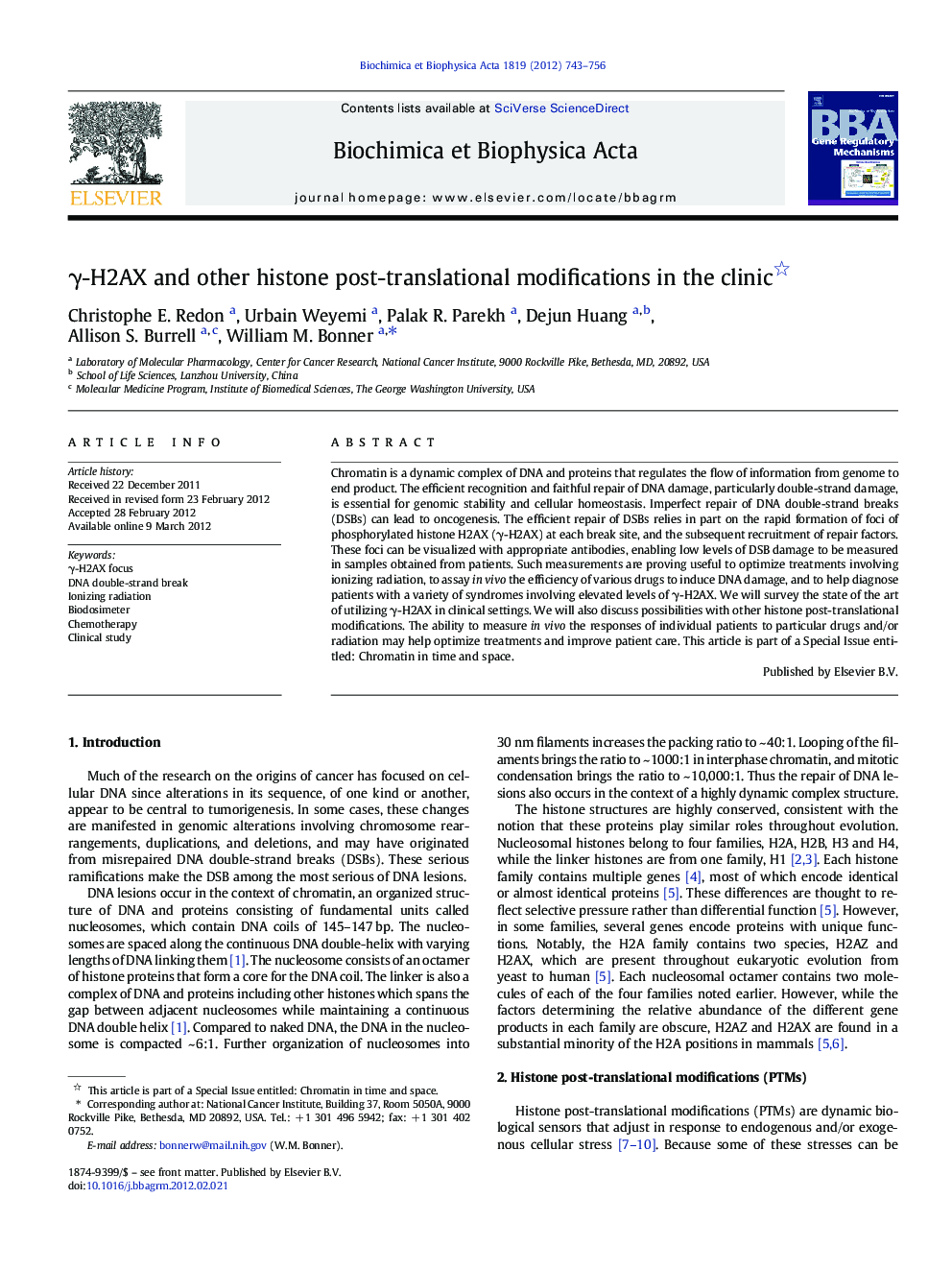| Article ID | Journal | Published Year | Pages | File Type |
|---|---|---|---|---|
| 1946583 | Biochimica et Biophysica Acta (BBA) - Gene Regulatory Mechanisms | 2012 | 14 Pages |
Chromatin is a dynamic complex of DNA and proteins that regulates the flow of information from genome to end product. The efficient recognition and faithful repair of DNA damage, particularly double-strand damage, is essential for genomic stability and cellular homeostasis. Imperfect repair of DNA double-strand breaks (DSBs) can lead to oncogenesis. The efficient repair of DSBs relies in part on the rapid formation of foci of phosphorylated histone H2AX (γ-H2AX) at each break site, and the subsequent recruitment of repair factors. These foci can be visualized with appropriate antibodies, enabling low levels of DSB damage to be measured in samples obtained from patients. Such measurements are proving useful to optimize treatments involving ionizing radiation, to assay in vivo the efficiency of various drugs to induce DNA damage, and to help diagnose patients with a variety of syndromes involving elevated levels of γ-H2AX. We will survey the state of the art of utilizing γ-H2AX in clinical settings. We will also discuss possibilities with other histone post-translational modifications. The ability to measure in vivo the responses of individual patients to particular drugs and/or radiation may help optimize treatments and improve patient care. This article is part of a Special Issue entitled: Chromatin in time and space.
► We review the uses of γ-H2AX and other modified histone species in the clinic. ► γ-H2AX is a useful radiation biodosimeter. ► γ-H2AX can be used to assay DNA damage during chemotherapy. ► γ-H2AX can be used to optimize cancer treatments and other procedures. ► Uses of other modified histone species are discussed.
